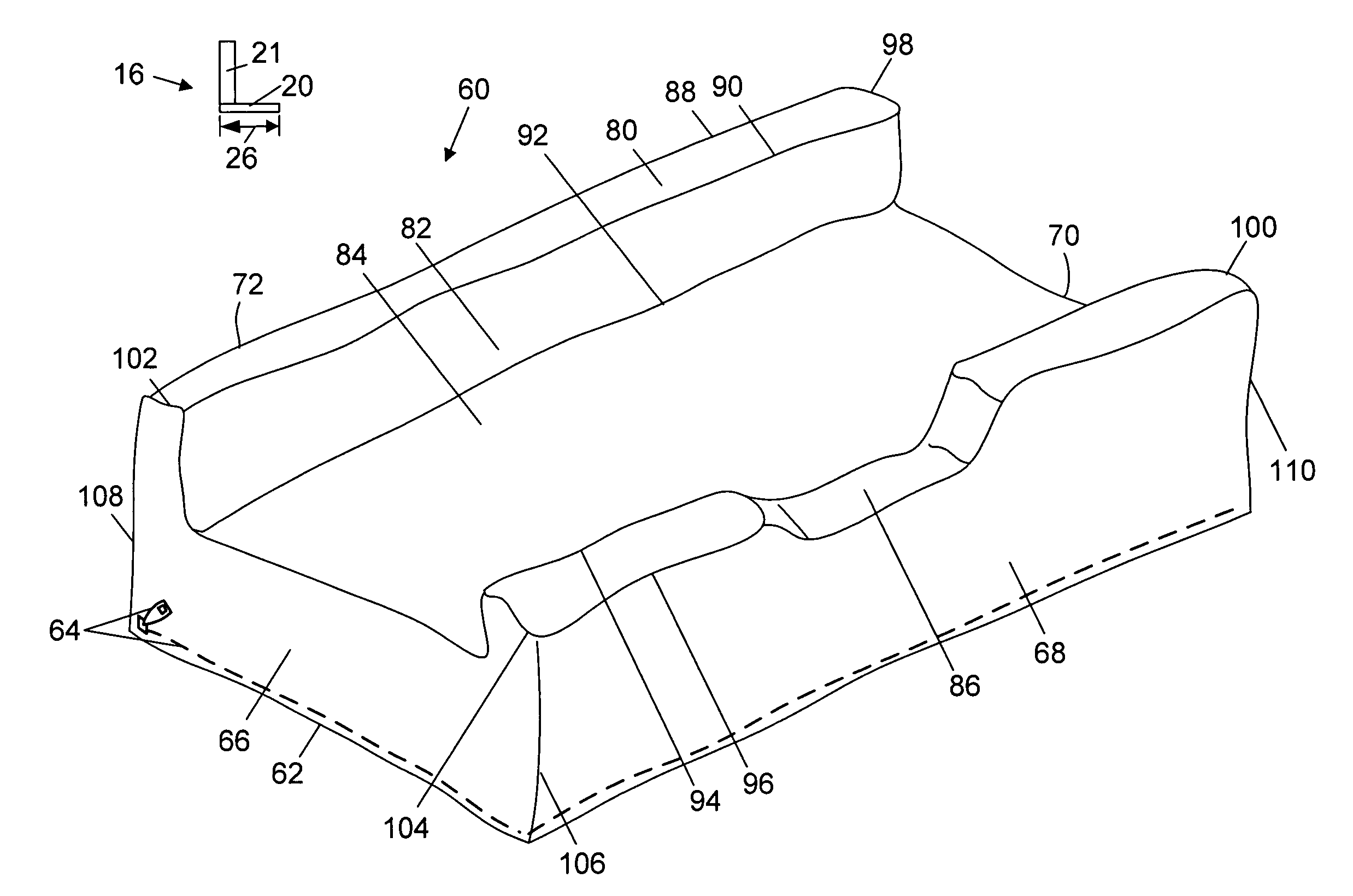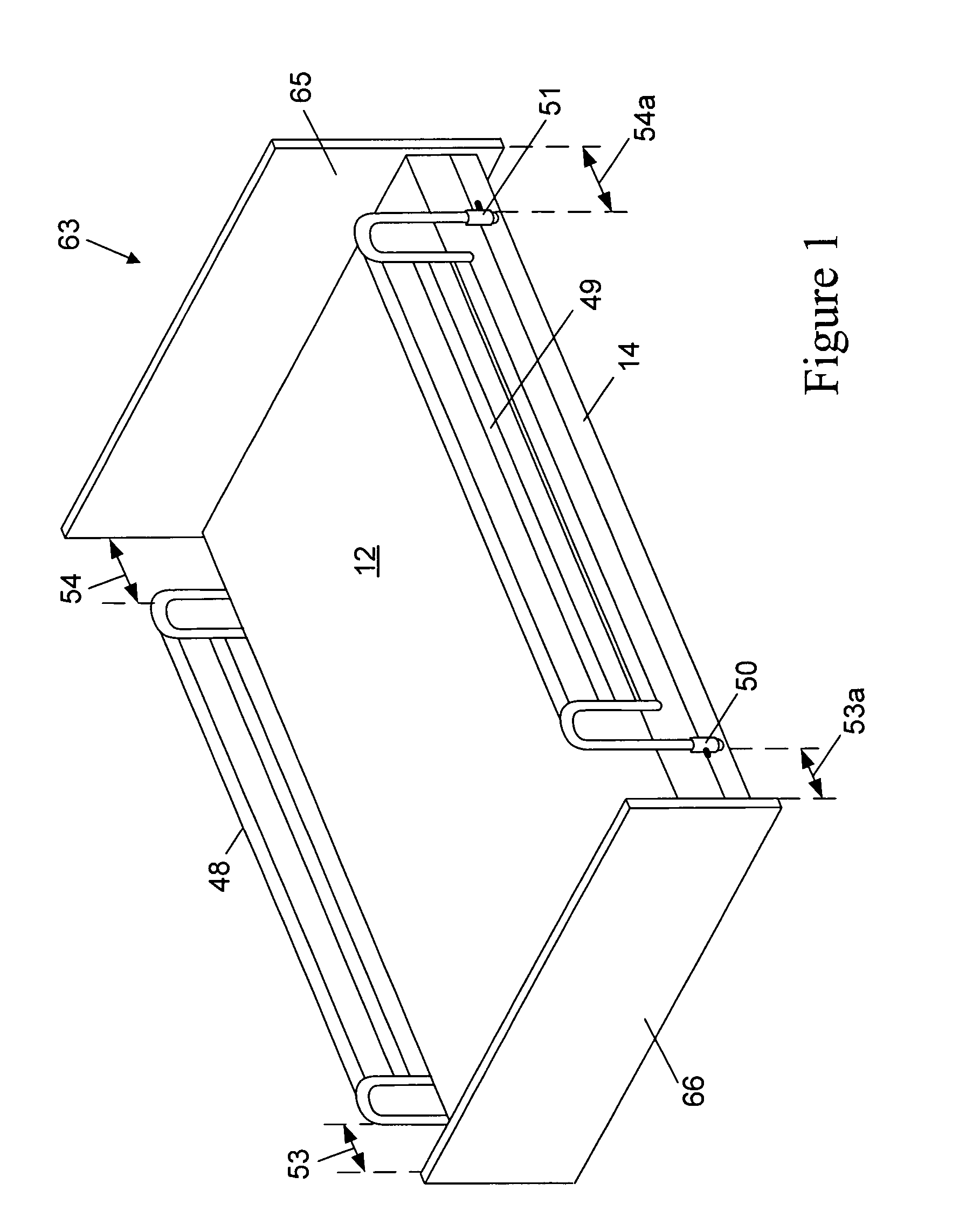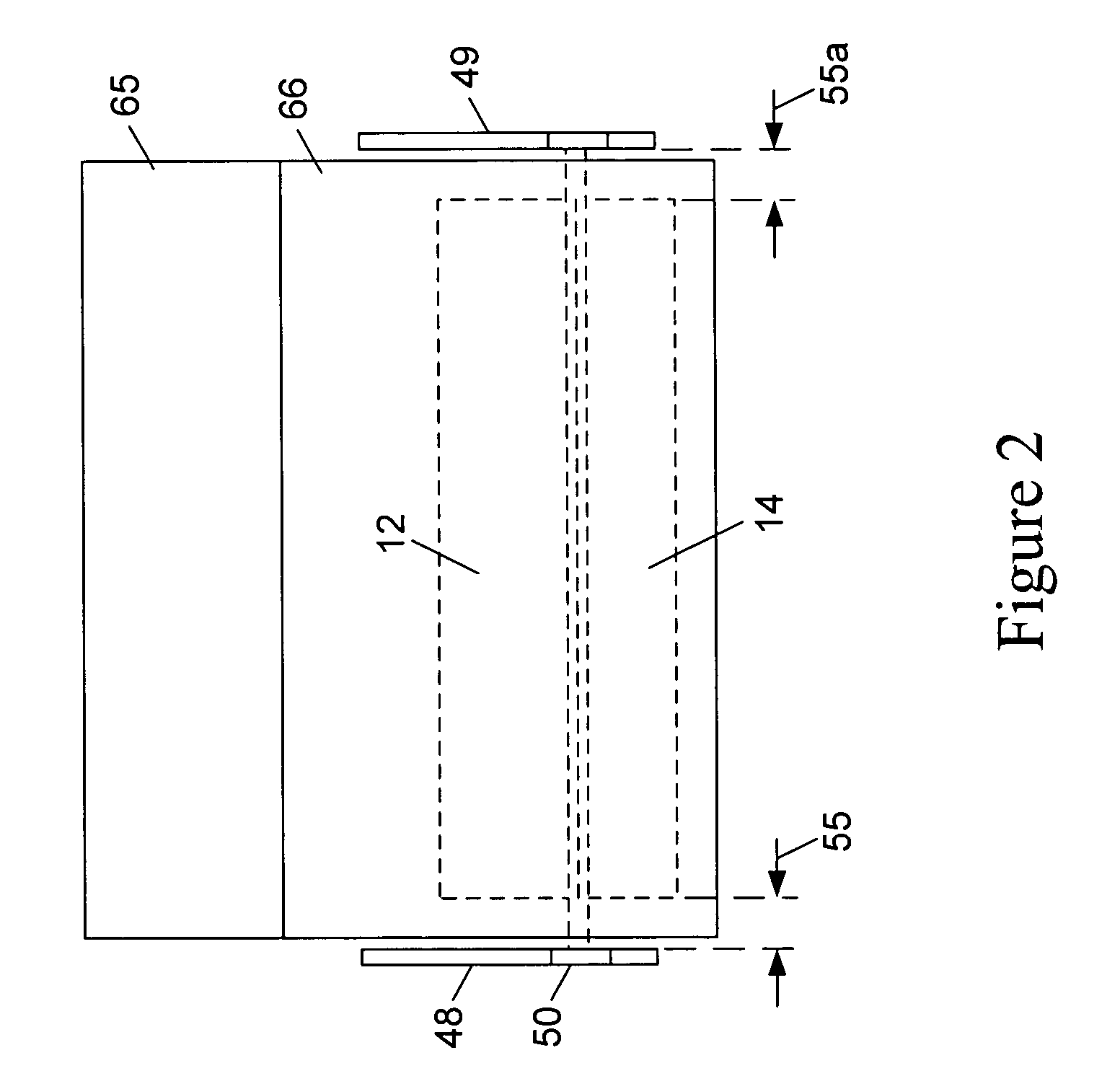Mattress assembly
a mattress and assembly technology, applied in the field of mattresses, can solve the problems of sprains and breaks, rise to a multiplicity of lawsuits against hospitals and long-term care facilities, and more serious injuries, including death, can also occur, and achieve the effects of reducing the risk of injury, avoiding injury, and avoiding injury
- Summary
- Abstract
- Description
- Claims
- Application Information
AI Technical Summary
Benefits of technology
Problems solved by technology
Method used
Image
Examples
Embodiment Construction
[0057]FIG. 1 is a perspective view of a bed assembly 63 comprised of a mattress 12 and foundation 14, according to the prior art. Disposed on bed assembly 63 are Bed Safety Rail (bed safety rail) assemblies 48 and 49 respectively, shown in the raised or upper operating position. Bed safety rail 48 / 49 are held in place by two adjustable lateral supports 50 and 51, respectively. Lateral supports 50 / 51 extend at least the width of mattress 12 and are disposed between mattress 12 and foundation 14. In the lowered or down configuration, the bed safety rail 48 / 49 are irrelevant to patient safety as the patient (not shown) is generally out of bed when the bed safety rail 48 / 49 are in this configuration. These prior art bed safety rail assemblies are generally manufactured of metal but could be made of any material and be in any configuration or shape of those bed safety rail assemblies currently available on the open market.
[0058]Referring to FIG. 1, the length of bed safety rail assemblie...
PUM
 Login to View More
Login to View More Abstract
Description
Claims
Application Information
 Login to View More
Login to View More - R&D
- Intellectual Property
- Life Sciences
- Materials
- Tech Scout
- Unparalleled Data Quality
- Higher Quality Content
- 60% Fewer Hallucinations
Browse by: Latest US Patents, China's latest patents, Technical Efficacy Thesaurus, Application Domain, Technology Topic, Popular Technical Reports.
© 2025 PatSnap. All rights reserved.Legal|Privacy policy|Modern Slavery Act Transparency Statement|Sitemap|About US| Contact US: help@patsnap.com



